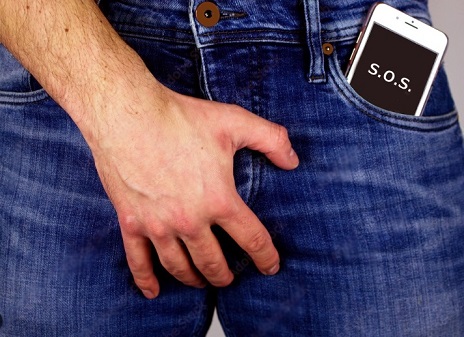Nikhil Prasad Fact checked by:Thailand Medical News Team Feb 05, 2025 2 months, 1 week, 1 day, 17 hours, 24 minutes ago
Medical News: In today's world, wireless technology is an integral part of daily life. From homes to offices, cafes to public transport, WiFi networks are everywhere. However, concerns about potential health risks associated with prolonged exposure to WiFi radiation continue to grow. A recent study by researchers from Universiti Kebangsaan Malaysia (UKM) and Institut Latihan Kementerian Kesihatan Malaysia (ILKKM) delves into the impact of WiFi exposure on male reproductive health, focusing on sperm quality and testicular tissue changes.
 WiFi Exposure Affects Male Fertility
WiFi Exposure Affects Male Fertility
The study aimed to determine how different durations of exposure to 2.45 GHz WiFi radiation affect sperm count, motility, viability, and testicular structure in male rats. This
Medical News report presents the key findings of this research, shedding light on the effects of WiFi exposure on male fertility.
Study Design and Key Findings
Researchers conducted an eight-week study on male Sprague Dawley rats, dividing them into four groups: a control group with no WiFi exposure, and three test groups exposed to 2.45 GHz WiFi radiation for 4 hours, 8 hours, and 24 hours daily. The study measured sperm concentration, motility, viability, and testicular histopathology to assess the impact of exposure.
Findings revealed that 4 hours of WiFi exposure had the most detrimental effects on sperm parameters. Rats in this group exhibited a significant reduction in sperm count, motility, and viability compared to the control group. Additionally, testicular tissue analysis showed structural damage, including reductions in seminiferous tubule diameter and epithelium height.
Interestingly, rats exposed for 8 hours showed partial recovery in sperm parameters and testicular tissue. By 24 hours of continuous exposure, testicular damage appeared to stabilize, suggesting that longer exposure durations may activate cellular repair mechanisms. However, complete recovery was not observed, indicating potential long-term consequences of WiFi exposure on reproductive health.
Oxidative Stress and Its Role in Reproductive Damage
One of the main mechanisms suspected to underlie the harmful effects of WiFi radiation is oxidative stress. The study measured malondialdehyde (MDA), a biomarker of lipid peroxidation and oxidative stress. Results showed that MDA levels were highest in the 4-hour exposure group, indicating increased oxidative stress and peroxidative injury. However, MDA levels gradually decreased in the 8-hour and 24-hour exposure groups, suggesting the activation of antioxidant defense systems.
Oxidative stress occurs when there is an imbalance between free radicals and antioxidants in the body, leading to cellular damage. Testicular tissues and sperm cells are particularly vulnerable to oxidative stress due to their high content of polyunsaturated fatty acids. Elevated MDA levels can impair sperm function, reducing motility and viability, which may contribute to fertility issues.
Impact on Testicular Histology
In addition to sperm parameters, researchers analyzed testicular tissue samples to assess structural changes. The Johnsen Score, a measure of spermatogenesis efficiency, was significantly lower in the 4-hour exposure group, indicating disrupted sperm production. The seminiferous tubule diameter and epithelial height were also reduced in this group, further supporting evidence of tissue damage.
The 8-hour exposure group showed some improvement in testicular structure, while the 24-hour group exhibited near-normal levels. This suggests that prolonged exposure may trigger cellular repair mechanisms that attempt to counteract damage. However, the exact processes behind this recovery remain unclear and warrant further investigation.
Conclusions and Implications
This study provides crucial insights into the effects of WiFi exposure on male fertility. The results suggest that short-term exposure (4 hours) to WiFi radiation induces significant oxidative stress and testicular damage, leading to impaired sperm function. While longer exposure durations (8 and 24 hours) appear to activate some repair mechanisms, complete recovery remains uncertain.
These findings raise important questions about the long-term impact of daily WiFi exposure on human reproductive health. Although this study was conducted on rats, the biological mechanisms involved may have implications for humans. Future research is needed to explore how WiFi radiation affects human sperm quality and testicular function over extended periods.
For now, individuals concerned about reproductive health may consider reducing prolonged direct exposure to WiFi radiation, such as keeping devices away from the body and limiting unnecessary usage.
The study findings were published in the peer-reviewed journal: Antioxidants.
https://www.mdpi.com/2076-3921/14/2/179
For the latest on Male Reproductive Health, keep on logging to Thailand
Medical News.
Read Also:
https://www.thailandmedical.news/news/health-news-university-of-geneva-study-finds-that-frequent-mobile-phone-use-results-in-poorer-semen-quality
https://www.thailandmedical.news/news/the-cellular-and-molecular-impact-of-magnetic-fields-on-human-health
https://www.thailandmedical.news/news/new-peer-reviewed-study-shows-how-magnetic-fields-affect-our-immune-cells
https://www.thailandmedical.news/news/5g-consequences-on-human-health
